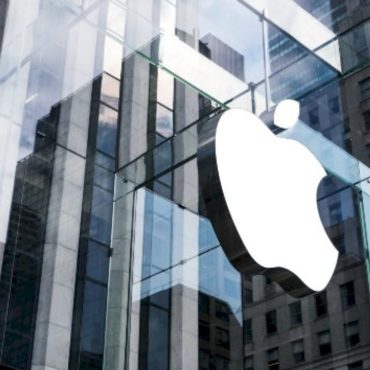Listeners:
Top listeners:
-
 play_arrow
play_arrow
94.3 Rev-FM The Rock of Texas | Where Texas Rocks
-
 play_arrow
play_arrow
99.1 The Buck Texas Country's Number 1 Country
-
 play_arrow
play_arrow
103.7 MikeFM Your Texas Hill Country Mix Tape
-
 play_arrow
play_arrow
KERV 1230 AM
-
 play_arrow
play_arrow
JAM Sports 1 JAM Broadcasting Sports 1
-
 play_arrow
play_arrow
JAM Sports 2 JAM Broadcasting Sports 2
In sweeping change, Biden administration to ban medical debt from credit reports

(WASHINGTON) — In a sweeping change that could improve millions of Americans’ ability to own a home or buy a car, the Biden administration will propose a rule Tuesday to ban medical debt from credit reports.
The rule, which will be announced by Vice President Kamala Harris and Consumer Financial Protection Bureau Director Rohit Chopra, comes as President Joe Biden beefs up his efforts to convince Americans his administration is lowering costs, a chief concern for voters in the upcoming election.
The rule, which has been in the works since September, could go into effect sometime next year, Chopra told ABC News in an exclusive interview ahead of the policy announcement.
“Our research shows that medical bills on your credit report aren’t even predictive of whether you’ll repay another type of loan. That means people’s credit scores are being unjustly and inappropriately harmed by this practice,” Chopra said.
CFPB’s research estimates that the new rule would allow 22,000 more people to get approved for safe mortgages each year — meaning lenders could also benefit from the positive impact on peoples’ credit scores, by being able to approve more borrowers.
Some major credit report companies have already stopped using medical debt to calculate peoples’ credit worthiness, including Equifax, TransUnion and Experian. FICO and VantageScore also recently started factoring medical debt less heavily into their scores.
But 15 million Americans still have $49 billion of medical debt that is hampering their scores, the CFPB found. This rule would extend the practice to all credit reporting in the U.S.
Medical debt is extensive in the U.S. It affects two in every five Americans, according to the health policy research organization KFF, and a vast majority have debt in the thousands.
Once those debts go to collections, credit scores take a hit, which means car and home loans are harder to come by or are only offered with high interest rates — leading to a slippery slope for people who are already struggling with their bills.
Lexi Coburn, 33, first ran into that issue nearly a decade ago. She took on medical debt in 2013, when she was 23 years old and uninsured.
Her feet were too swollen to walk, so she went to the emergency room, unsure where else she could go to get medical care without insurance. She was told she had early onset arthritis.
The $425 bill from that visit was not in Coburn’s budget, so she left it unpaid. Growing up, her family frequently didn’t have the income to cover medical expenses, she said, and she felt ill-equipped to handle the medical system any differently as a young adult.
Though she was later able to enroll in health insurance through the Affordable Care Act, Coburn’s medical debt still grew to over $2,300 — including another $1,532 from dental work and a separate ER visit, both in 2019.
The consequences became clear when she tried to get a car.
“Immediately my medical debt was in the way of qualifying for a good loan that didn’t have an outrageous payment per month,” Coburn said.
“The most frustrating aspect for me was in my mid 20s, when I wasn’t making a lot of money, I needed to be able to get transportation to get to my job,” Coburn said.
She saw a perilous financial cycle mounting. Coburn’s bills and subsequently low credit score got in the way of “being able to thrive enough to pay off the debt,” she said. “So it just felt like a domino effect.”
The new CFPB rule also seeks to address the issue of incorrect, confusing and complicated medical bills, which often lead to long, drawn-out disputes between patients and billing departments — a complaint that the CFPB, as the agency tasked with consumer empowerment, receives in droves, Chopra said.
“Too often, we see that people are receiving bills that are inaccurate. Many patients are fighting over these bills for months, only to find that it then appears on their credit report,” he said.
Experts who support the CFPB’s proposed rule also point to the already-low success rate for collecting on medical bills.
“We know empirically that the repayment rates are incredibly low for medical debt, and so it’s already the case that people aren’t really paying it down. So I don’t think this policy change is going to change the behavior that dramatically,” said Matt Notowidigdo, a professor at University of Chicago’s Booth School of Business who studies health economics.
Linda Davis, a 61-year-old resident of Grand Rapids, Michigan, has chronic obstructive pulmonary disease, a type of lung disease, and uses a power wheelchair because of a lower back injury. She said she doesn’t think she’ll ever pay off her medical bills, which she estimates to be between $45,000 and $50,000.
“People might be mistaken and think, oh, well, she’s got Medicare, she’s all set. That’s not the case at all, and it can screw your whole life up. It takes control of your whole life,” Davis said.
She said her monthly income covers rent, electricity, her cell phone bill and groceries, but that she doesn’t have room in her budget for her medical bills.
“You find out [after the procedure], you’ve got all these medical bills, and what are you supposed to do with them all? You know, there’s no way on God’s green earth I could pay all those medical bills. Even if I paid a small amount every month, I wouldn’t live long enough to pay them all,” Davis said.
To Notowidigdo and many other health economists, addressing the root cause of America’s medical debt issue would mean enrolling more people in adequate health care coverage on the front end, “rather than dealing with unpaid medical bills from lack of insurance or not generous enough insurance on the back end,” he said.
Of course, for now, those large bills and low repayment rates are already a challenge for hospitals and health care systems.
If the CFPB rule leads to fewer people paying the bills, it could be the patients who suffer, some experts warned.
Ge Bai, a professor who studies accounting health policy at Johns Hopkins University, predicted that hospitals will have to make up for that loss in other ways. More stringent payment efforts, like requiring payment before patients receive medical care, could leave low-income patients worse off.
“I think in the short run, it will be great news for patients, and probably we’ll see patient advocacy groups pushing it. However, I think in the long-run, when the long-term negative effects emerge, probably we’re going to see more pushback,” Bai said.
Industry groups, like the Association of Credit and Collection Professionals, have echoed Bai’s concerns.
“There’s too much at stake for Americans’ access to quality health care by taking actions that only negatively affect the cash flow to the health care community without finding ways to replace those funds,” ACA CEO Scott Purcell said when CFPB first announced it was looking into the policy change.
Chopra rejected the notion that more people will default on their health care debts as a result of the rule, saying they’ll still have to face other penalties that come with debt.
“Those individuals will still be subject to collection actions, lawsuits and more. There are plenty of ways that people get penalized for not paying their bills. I just don’t want to see the credit reporting system be weaponized against people who already paid them,” Chopra said.
Copyright © 2024, ABC Audio. All rights reserved.
Written by: ABC News
Similar posts
-
Top popular

Ingram man charged with murder after fatal shooting

Kerr Crime Stoppers offering reward up to $5,000 for information in last week’s non-viable school threat

KISD asks parents to communicate with children about words and actions after ‘copy cat’ threat note found at middle school

City of Kerrville Parks and Recreation reminds citizens that a Red Flag Warning is in effect until further notice

City of Kerrville says that May 7 General and Special Elections will proceed



